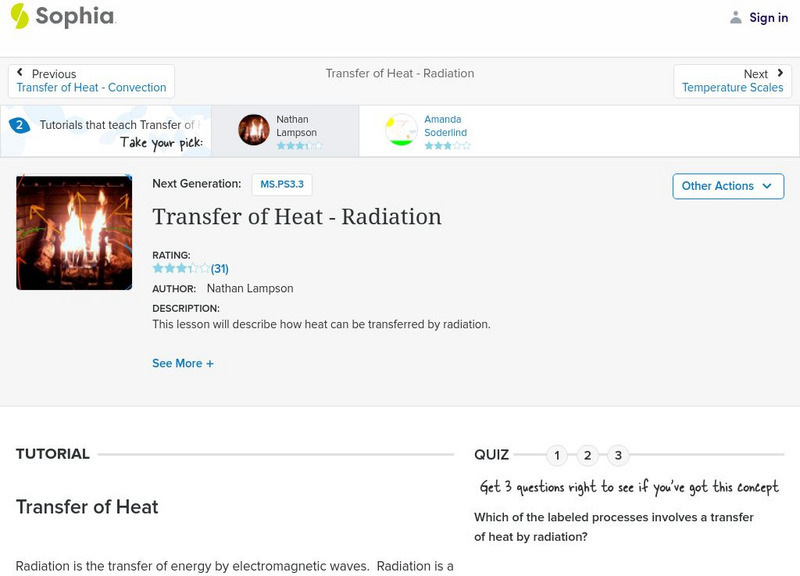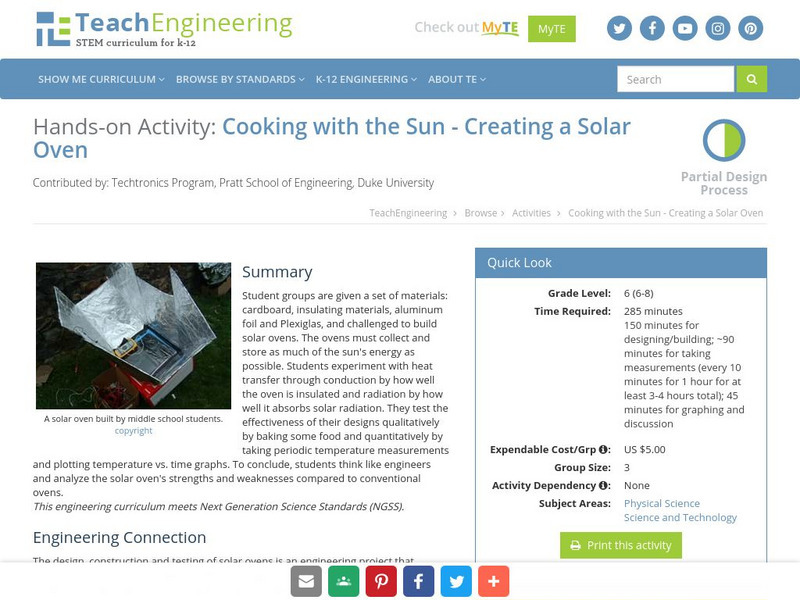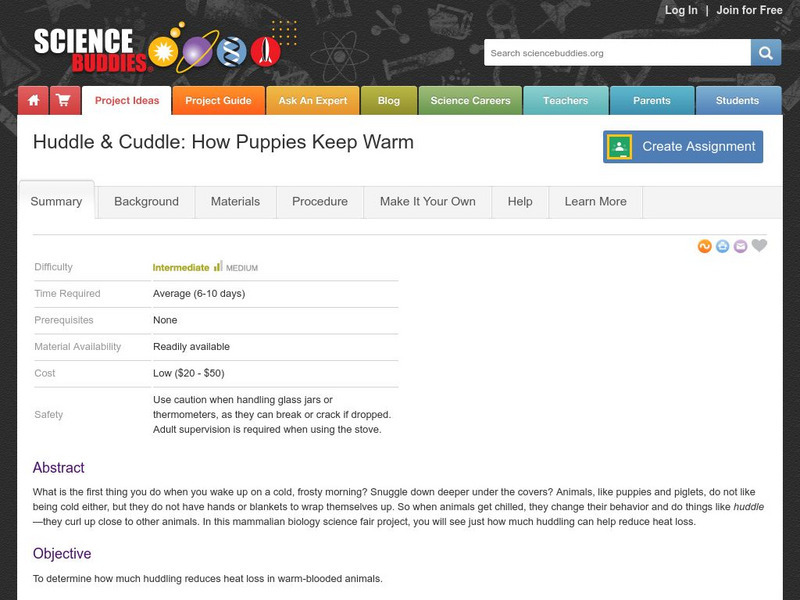Hi, what do you want to do?
Georgia State University
Georgia State University: Hyper Physics: Heat Engine Concepts: Carnot Cycle
The Carnot cycle is described, illustrated and explained. The Carnot efficiency equation is given and interactive JavaScript form allows the visitor to investigate the effect of the reservoir temperature and the sink temperature upon the...
Georgia State University
Georgia State University: Hyper Physics: Heat Engine Concepts: The Otto Cycle
Schematic diagrams illustrating the operation of a four-stroke engine cycle. Interactive buttons allow you to step through the various steps of each engine cycle. Each graphic is accompanied by an excellent explanation.
Concord Consortium
Concord Consortium: Heat and Temperature
Learn that temperature measures average kinetic energy, and heat is the transfer of energy from hot systems to cold systems. Consider what makes a good conductor. (Requires Java)
Other
Applied Thermodynamics: Heat Transfer
Heat transfer, rates of heat exchange,conduction, radiation and convection are defined and discussed at this site from Applied Thermodynamics. Well illustrated.
PBS
Pbs Learning Media: The Electromagnetic Spectrum: Frontline
This video segment adapted from FRONTLINE introduces the electromagnetic spectrum and explains how the various types of electromagnetic waves are distinguished by the amount of energy each wave carries.
CK-12 Foundation
Ck 12: Calorimetry
[Free Registration/Login may be required to access all resource tools.] Using diagrams and practice problems, students learn how the units of calories are used to measure the energy of the heat transfer. They also discover how...
OpenSciEd
Open Sci Ed: Net Logo: Conduction in Solids Full (Fixed)
This simulation shows conduction of thermal energy within and between solids, based on the kinetic energy of particles, and collisions between neighboring particles.
Science4Fun
Science4 Fun: Heat Transfer
What is heat transfer? Illustrated discussion of the three methods of heat transfer: conduction, convection, radiation.
Sophia Learning
Sophia: Transfer of Heat Radiation: Lesson 2
This lesson will describe how heat can be transferred by radiation. It is 2 of 2 in the series titled "Transfer of Heat - Radiation."
Sophia Learning
Sophia: Transfer of Heat Radiation: Lesson 1
This lesson will describe how heat can be transferred by radiation. It is 1 of 2 in the series titled "Transfer of Heat - Radiation."
Physics Aviary
Physics Aviary: Practice Problems: Heat Transfer Problem
Determine the rate at which heat moves through a barrier that is separating gases at two different temperatures.
National Weather Service
National Weather Service: Jet Stream: The Atmosphere
Learn about the atmosphere, it's make-up, the layers, the hydrologic cycle and more. The National Weather Service presents this site, including learning lessons and review questions.
Thomas Jefferson National Accelerator Facility
Jefferson Lab: Science Crossword Puzzles Energy and Heat Transfer [Pdf]
Find out what you know about energy and heat transfer by completing this crossword puzzle!
Other
Three Methods of Heat Transfer: Conduction, Convection and Radiation
A quick, illustrated overview of the three main methods of heat transfer: conduction, convection, and radiation.
Science Education Resource Center at Carleton College
Serc: How Much Energy Do You Save by Doubling Insulation?
Students use the governing equation for steady state heat transfer across a surface to explore the effect of changing the insulation value on the amount of energy used.
TeachEngineering
Teach Engineering: Solar Water Heater
Student teams design and build solar water heating devices that mimic those used in residences to capture energy in the form of solar radiation and convert it to thermal energy. This thermal energy is next transferred to water (to be...
TeachEngineering
Teach Engineering: Cooking With the Sun Creating a Solar Oven
For this activity, students will be given a set of materials: cardboard, a set of insulating materials (i.e. foam, newspaper, etc.), aluminum foil, and Plexiglas. Students will then become engineers in building a solar oven from the...
OpenStax
Open Stax: Convection
In this section of a college textbook, the topic of convection is explored. Understand how the process of convection transfers heat. Also learn how to calculate the rate of heat transfer by convection. Section also includes problems and...
TeachEngineering
Teach Engineering: Conduction, Convection, and Radiation
With the help of simple, teacher-led demonstration activities, students learn the basic concepts of heat transfer by means of conduction, convection, and radiation. Students then apply these concepts as they work in teams to solve two...
Science Buddies
Science Buddies: Project Ideas: Huddle and Cuddle: How Puppies Keep Warm
In this mammalian biology science fair project, students will determine how much huddling reduces heat loss in warm-blooded animals. The Science Buddies project ideas are set up consistently beginning with an abstract, objective, and...
Science Buddies
Science Buddies: Project Ideas: How Horses Keep Warm in the Wind
In this mammalian biology science fair project, students will learn about methods of heat transfer and determine the best direction in which horses should stand in a cold wind to maintain their core temperature. The Science Buddies...
TeachEngineering
Teach Engineering: Imagine Life Without Friction
Young scholars are introduced to the concept of inertia and its application to a world without the force of friction acting on moving objects. When an object is in motion, friction tends to be the force that acts on this object to slow...
Georgia State University
Georgia State University: Hyper Physics: Heat Conduction
Using understandable words and exceptional graphics, this page describes the transfer of energy by means of conduction. Contains several links to related topics.
Science Education Resource Center at Carleton College
Serc: Heat Transfer Heat Absorption
Students will be given a chance to place their hands on two different objects and then predict on which an ice cube will melt more quickly. Students will make a prediction as to what will happen when balloons filled with air and with...























